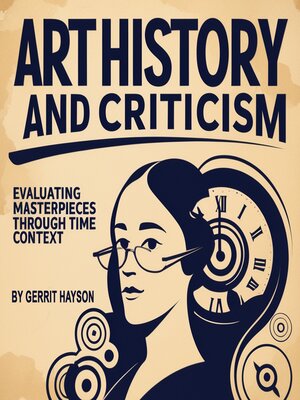Art History and Criticism
audiobook (Unabridged) ∣ Evaluating Masterpieces Through Time and Context
By Gerrit Hayson

Sign up to save your library
With an OverDrive account, you can save your favorite libraries for at-a-glance information about availability. Find out more about OverDrive accounts.
Find this title in Libby, the library reading app by OverDrive.



Search for a digital library with this title
Title found at these libraries:
| Library Name | Distance |
|---|---|
| Loading... |
This audiobook is narrated by a digital voice.
Art does not exist in a vacuum. Every brushstroke, every chisel mark, every carefully chosen pigment carries within it the weight of its historical moment, the aspirations of its creator, and the expectations of its intended audience. To truly understand and evaluate a work of art, we must first acknowledge that meaning is not fixed but fluid, shifting like light across a canvas as centuries pass and new eyes encounter old masterpieces.
The history of art criticism reveals this fundamental truth: what one generation celebrates, another may dismiss, and what seems revolutionary in one era may appear conventional in the next. Consider the dramatic reversal in the reputation of Johannes Vermeer, whose quiet domestic scenes were largely forgotten for two centuries before being rediscovered and elevated to the pantheon of Old Master painters in the late nineteenth century. The Girl with a Pearl Earring, now one of the most recognizable images in Western art, languished in relative obscurity until scholars began to appreciate the subtle psychological complexity and technical mastery that Vermeer embedded in his seemingly simple compositions.
This transformation in Vermeer's reputation illustrates a crucial principle of art historical evaluation: context is everything. The same painting that appeared mundane to eighteenth-century collectors, who preferred grand historical narratives and dramatic religious scenes, captivated modern viewers who had learned to value intimacy, psychological nuance, and technical innovation over scale and subject matter. The painting itself had not changed, but the lens through which it was viewed had been fundamentally altered by shifts in artistic taste, cultural values, and critical methodology.







